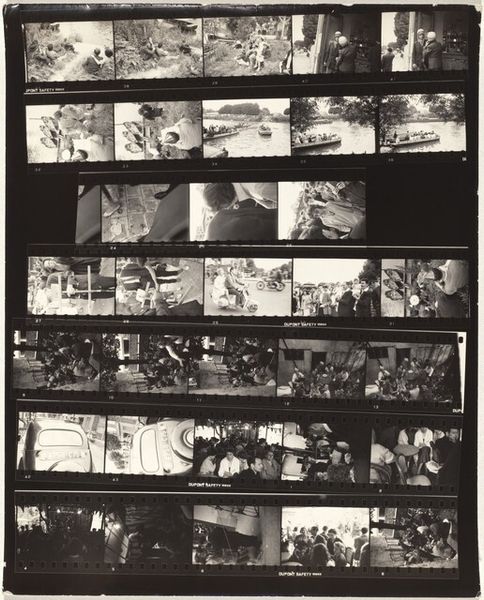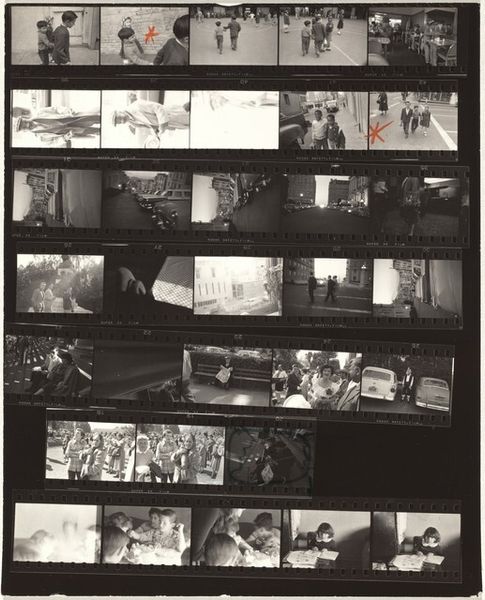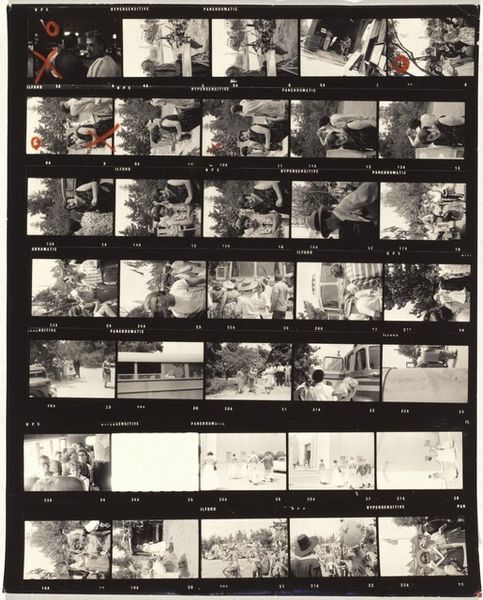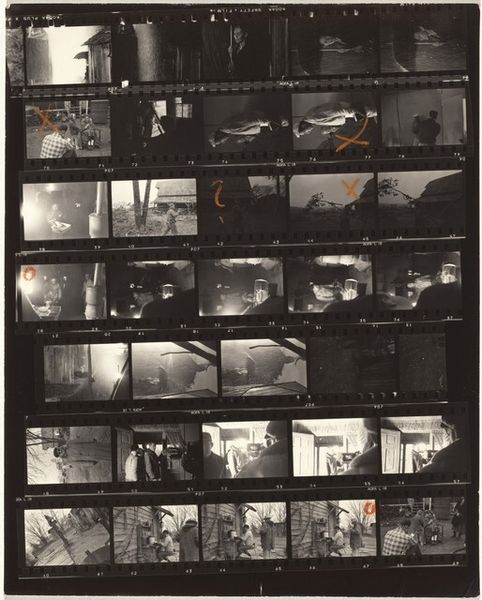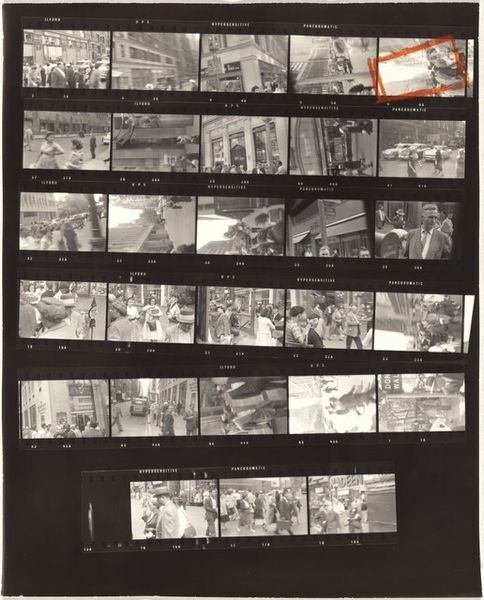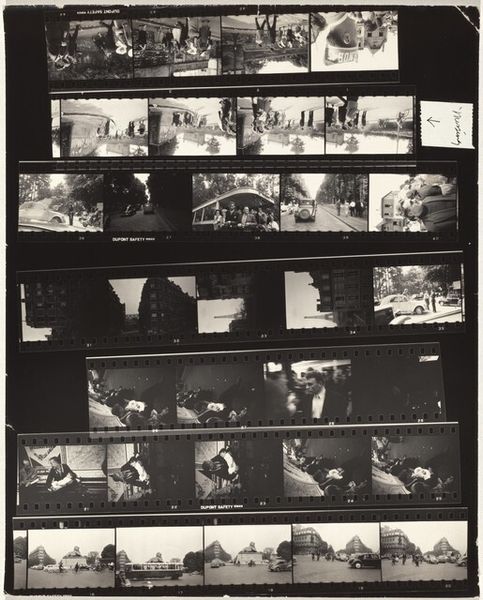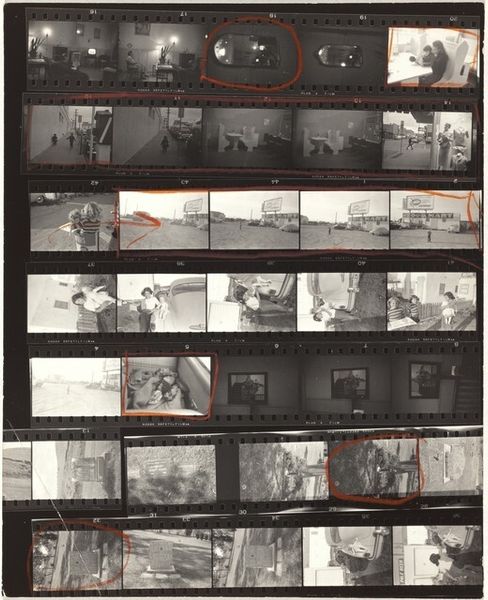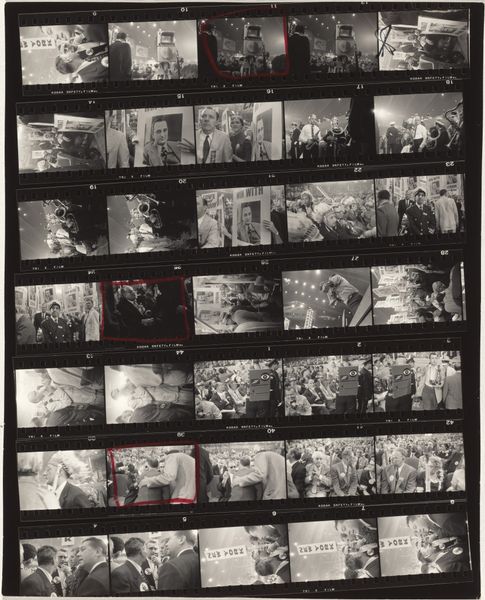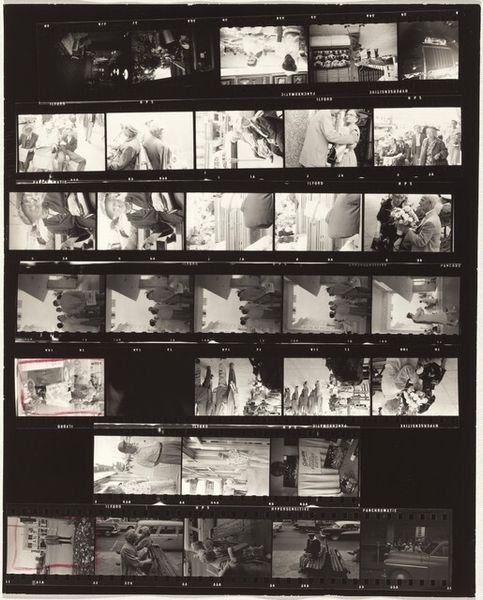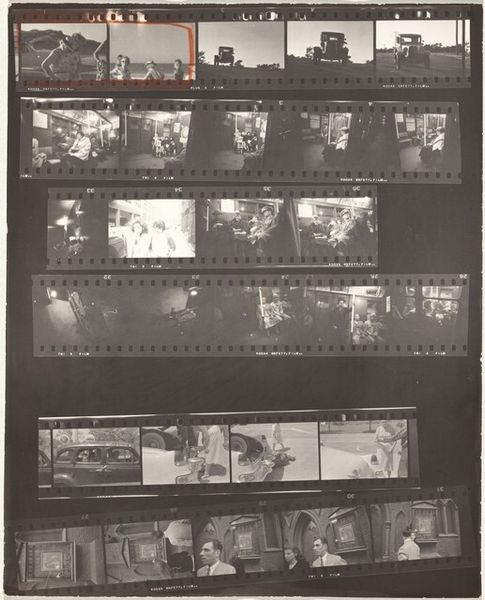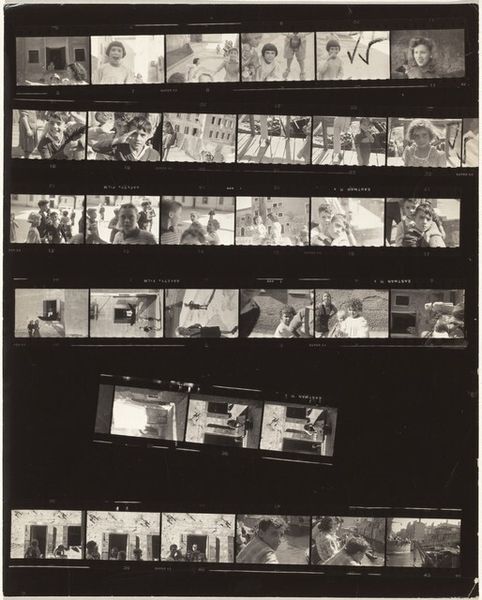
Dimensions: sheet: 25.2 x 20.3 cm (9 15/16 x 8 in.)
Copyright: National Gallery of Art: CC0 1.0
Editor: Here we have Robert Frank's "Stable opening no number," a gelatin silver print from 1955. It's a contact sheet showing several exposures. It feels like a glimpse behind the scenes, an unfiltered look. What do you make of it? Curator: Frank gives us an unvarnished perspective of the art world, right? Consider that in the mid-1950s, America was grappling with questions of identity and authenticity. Frank, an outsider, captures the somewhat staged reality of an art opening. What do you think those red "X" marks signify on some of the frames? Editor: Perhaps those marked frames were deemed unsuitable, the ones Frank didn't want to print. They add another layer to this idea of 'unfiltered reality,' since even documentary photographers curate. Curator: Precisely! And let's think about what wasn't deemed suitable. What stories are being told by the selected and unselected images and how do power structures influence this choice? Editor: That's a great point. It's not just what's shown, but also what's deliberately omitted that shapes our understanding of the event, even history. Curator: And how does the use of the contact sheet itself, almost like evidence, change your perception? Is it a critique of high art culture, maybe? Editor: I see it as a demystification, revealing the artist's selection process. It's fascinating how the form itself becomes a commentary. Curator: Exactly! By leaving in the rejected frames, Frank resists a singular, polished narrative. He is really speaking to an emerging social consciousness. Something, in my opinion, which makes it truly unique. Editor: I learned that even a selection process is a reflection of what the artist chooses to portray, or not, and can reflect society in many ways. Curator: It is amazing how documentary photography such as Frank’s speaks to the way that people’s voices get shaped.
Comments
No comments
Be the first to comment and join the conversation on the ultimate creative platform.

